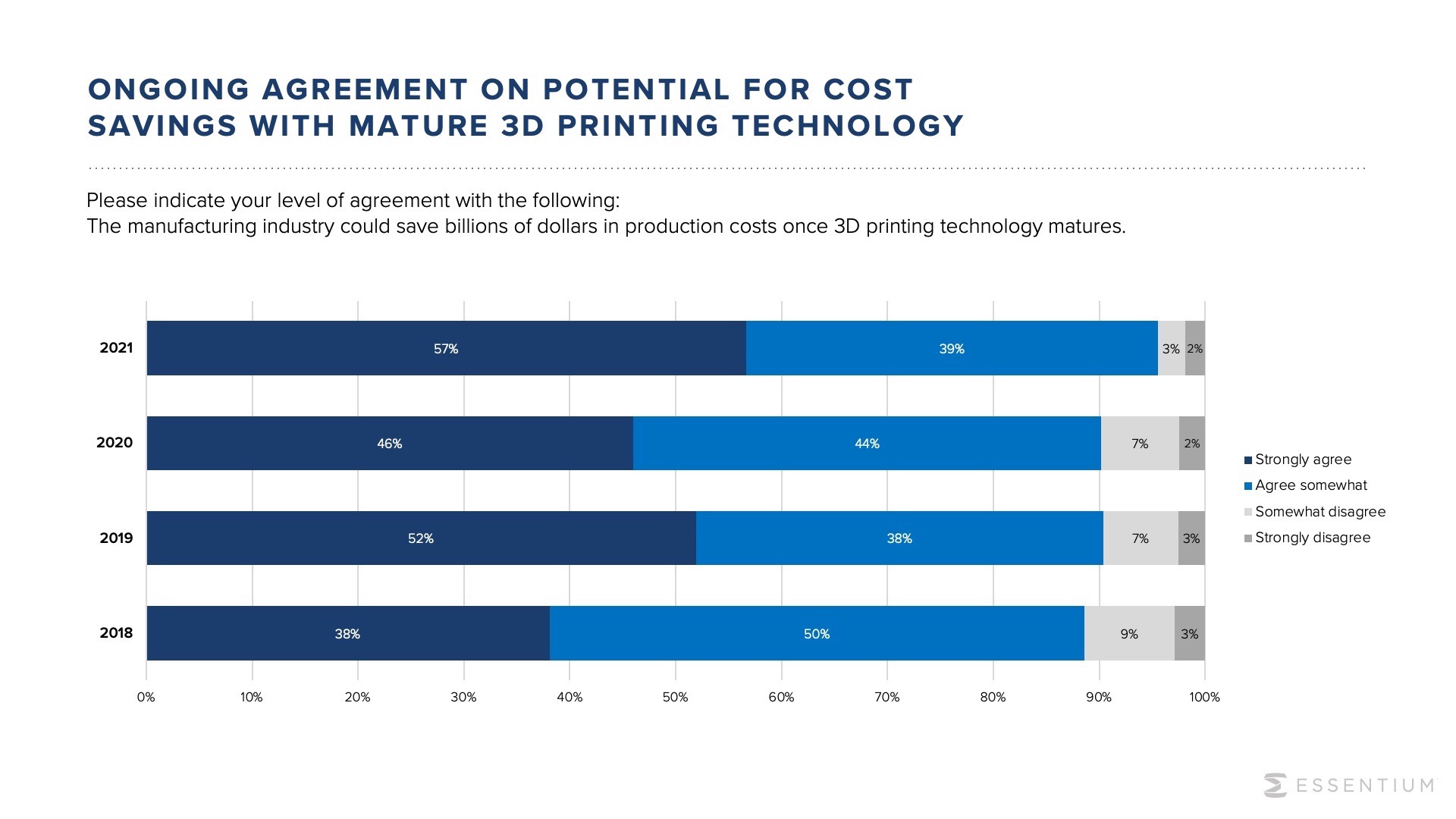3D Printing Gets Confidence Boost Among Manufacturers
Essentium study shows companies see strong financial business case for 3D printing at scale.

Essentium study finds strong confidence in 3D printing maturity. Image Courtesy of Essentium
March 14, 2022
We hear a lot about 3D printing as a conduit for greater design flexibility and innovation. Now a new study from Essentium reveals that companies are also gaining confidence in industrial 3D printing as a way to impact the bottom line.
In its latest global survey, the maker of industrial 3D printing solutions found strong confidence in 3D printing maturity among respondents. According to Essentium’s findings, almost all (96%) of manufacturing executives believe there can be savings in the billions of dollars in production costs with a switch to 3D printing, up from 88% in 2018. Moreover, a growing number of manufacturers believe that 3D printing at scale can have a direct impact on revenue generation with more than half (56%) agreeing that AM will lead to significant increases in revenue, up from 37% in 2020.
The survey reveals that 3D printing maturity is at a value inflection point, contends Blake Teipei, Ph.D., Essentium’s CEO. “When comparing the responses to this survey year over year, there was an increase in efforts to educate finance and procurement teams,” he explains. “While there are still obstacles to adoption, more professionals in each part of the manufacturing industry are seeing the business case for 3D printing at scale.”
Specifically, Teipei sees industrial AM becoming a revolutionizing force for manufacturers’ transition to Industry 4.0 because it delivers the flexibility of 3D printing with the productivity, scale, and cost efficiencies of traditional manufacturing. “From shortening supply chains and increasing self-sufficiency to minimizing waste and speeding turnaround on design iterations and faster speed to part, AM has potential to move the cost curve,” he explains.
The study also showed that 3D printing technology is empowering designers to invent new ways to fabricate parts at multiple points in the production process, including as a means of redefining how manufacturing tools, jigs, fixtures, fit tests, and end-use parts are created at scale. Ninety-seven percent of those surveyed confirmed that 3D printing allows their design engineers to be more creative.
There is still work to be done to push 3D printing maturity to the next level. For one thing, continuous innovation is required to realize the full potential of industrial 3D printing at scale. From the viewpoint of designers and engineering teams, improved design and management of AM platforms is required (cited by 40% of respondents) while operations team believe better 3D printing software (35%) is required to realize the full potential of industrial 3D printing at scale. Nearly three quarters of respondents (74%) believe it’s critical that 3D printing vendors embrace an open ecosystem in order for the solutions to deliver the most value.
Education and workforce development is another important part of the equation, a gap cited by 32% of Essentium global survey respondents as a requirement that’s critical to their procurement and finance teams.
“Engineers and designers need to acquire the knowledge and techniques to design for additive manufacturing and learn how to apply it to applications,” Teipei acknowledged. “This will open up more complex geometries, use of less materials, and reduction in print time. Companies need to focus on adopting AM into their existing machinery and workflows—that’s the sweet spot.”
Subscribe to our FREE magazine, FREE email newsletters or both!
About the Author
Beth Stackpole is a contributing editor to Digital Engineering. Send e-mail about this article to [email protected].
Follow DE





